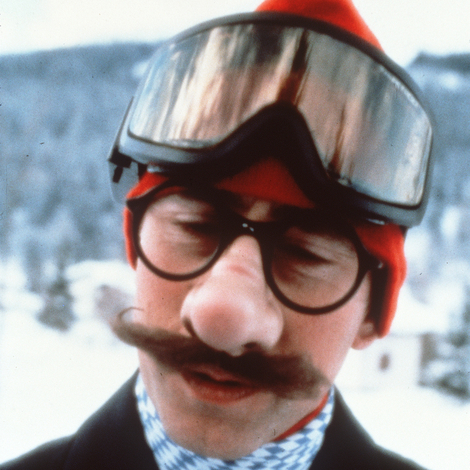Thumbing through the brittle pages of the scrapbook of Jean Carroll, America’s first Jewish woman to do stand-up comedy, I felt … invasive. My iPhone snapped photos, turning textured collages into weightless digital data. My academic gaze threatened to transform a family heirloom into “research.” At one point, when I unfolded a lengthy clipping that had been doubled over, it crumbled in my hand and I gasped in horror. I imagined Carroll, carefully creasing the newsprint to fit the scrapbook page. I had desecrated the masterpiece she had so carefully prepared for … for whom? The scrapbook felt like Carroll extending her hand out through the onslaught of oblivion that comes with time, but who—or what—was she reaching toward?
The film-and-digital-media scholar Amelie Hastie offers some insight on this question. In her book Cupboards of Curiosity, Hastie examines dozens of scrapbooks by and about women who worked in the silent-film era. According to Hastie, the author of a scrapbook both expects her artifacts to disappear (or she would have no need to preserve them in the first place) and anticipates their re-discovery. So, too, does Carroll’s collection and curation of press clippings suggest that she expected her fame to recede, but also that she hoped it would be recovered. Building this archive, this scrapbook, may have been her way to, as Hastie puts it, “transform memories (or acts of remembering) into histories.”
Like memories, scrapbooks can be pieced together in many different ways. Paying attention to the arrangement of Carroll’s scrapbook, rather than just its content, led me to significant revelations. In her field of stand-up comedy, the dominating structure is the joke. The most common joke structure establishes expectations (setup), and then subverts them (punch line). For example, see Carroll’s joke: “I went to see a big throat doctor. Only big throats he saw.” We expect one meaning of “big” (prestigious doctor), only to have those expectations subverted with another (large throat).
This same structure of setting—and then subverting—an expectation is played out in Jean Carroll’s scrapbook. The first 95 pages consist of documentation of her career: booking information in trade papers, and advertisements and reviews in the popular and Jewish presses. These pages record her years in vaudeville and the “Borscht Belt” of the Catskill Mountains, her best-selling shows from New York’s Copacabana to London’s Savoy, her nearly 30 appearances on The Ed Sullivan Show, her short-lived sitcom, The Jean Carroll Show, and so much more.
Then, in an abrupt subversion of expectations, the final 30 pages chart not Carroll’s work but her family life. She married fellow vaudeville performer Buddy Howe, a dancer who ultimately became her manager and a leading agent in the entertainment industry. The couple had a daughter who went on to have two daughters of her own. In addition to being a devoted mother and grandmother, Carroll was also a doting aunt, sister, daughter, and neighbor.
These pages record her years in vaudeville and the “Borscht Belt” of the Catskill Mountains, her nearly 30 appearances on The Ed Sullivan Show, and so much more.
It is a notable difference that may not be a punch line, per se, but certainly packs a punch. The comedy routines that Carroll did onstage were distinctively autobiographical and revolutionarily personal. So the idea that Jean Carroll’s scrapbook—her most thorough account of her life and work—echoes joke structure offers an appealing symmetry: not only do her jokes tell a kind of autobiography but her autobiography tells a kind of joke.
Thinking along these lines, it is hard not to wonder if Carroll is “in” on the joke. Did she notice the incongruity between the scrapbook’s early clippings, praising her turns at the Palace Theatre and the Copacabana, and the later ones, documenting her daughter’s dance recitals? Who had the last laugh? The entertainment industry, which fawns then forgets in the blink of an eye (or the turn of a page)? Or Carroll, who took the spoils of show business and ran, leaving behind the nameless audience for her beloved family and friends?
The weight of the scrapbook in my arms is a physical reminder of what I owe to Jean Carroll as her biographer. I wanted to honor the stories that she was trying to tell. But I also sought to explore the stories that she was not trying to tell, but which nonetheless emerged.
Grace Kessler Overbeke is an assistant professor in the Department of Theatre at Columbia College, Chicago

